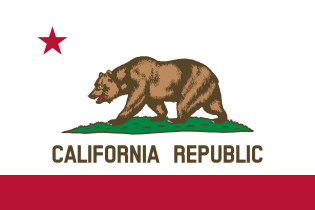California Democratic Party
The California Democratic Party is the state branch of the United States Democratic Party in the state of California. The party is headquartered in Sacramento.
California Democratic Party | |
|---|---|
 | |
| Chairperson | Rusty Hicks |
| Senate leadership | Toni Atkins (President pro tempore) |
| Assembly leadership | Anthony Rendon (Speaker) |
| Governor of California | Gavin Newsom |
| Lieutenant Governor of California | Eleni Kounalakis (President of the Senate) |
| Founded | 1846 |
| Headquarters | 1830 9th Street, Sacramento CA 95811 |
| Ideology | Modern liberalism Progressivism Social liberalism |
| Political position | Center-left |
| National affiliation | U.S. Democratic Party |
| Colors | Blue |
| Seats in the U.S. Senate | 2 / 2 |
| Seats in the U.S. House | 45 / 53 |
| Statewide Executive Offices1 | 8 / 8 |
| Seats in the State Senate | 29 / 40 |
| Seats in the State Assembly | 61 / 80 |
| Website | |
| www.cadem.org | |
1California Department of Education is a nonpartisan state executive position. | |
With 43.5% of the state's registered voters as of 2018, the Democratic Party has the highest number of registrants of any political party in California.[1] Democrats also enjoy supermajorities in both houses of the California State Legislature, holding 61 out of 80 seats in the California State Assembly and 29 out of 40 in the California State Senate. Democrats hold all 8 statewide executive branch offices, 46 of the state's 53 seats in the House of Representatives, and both of California's seats in the United States Senate.
History
1850s
Since the beginning of the 1850s, issues regarding slavery had effectively split the California Democratic Party. By the 1853 general election campaign, large majorities of pro-slavery Democrats from Southern California, calling themselves the Chivalry (later branded as Lecompton Democrats), threatened to divide the state in half, should the state not accept slavery. John Bigler, along with former State Senator and Lieutenant Governor David C. Broderick from the previous McDougall Administration, formed the Free Soil Democratic faction, modeled after the federal Free Soil Party that argued against the spread of slavery.
The Democrats effectively split into two camps, with both the Chivalry and Free Soilers nominating their own candidates for the 1853 election.[2] By 1857, the party had split into the Lecompton and Anti-Lecompton factions. Lecompton members supported the Kansas Lecompton Constitution, a document explicitly allowing slavery into the territory, while Anti-Lecompton faction members were in opposition to slavery's expansion. The violence between supporting and opposition forces led to the period known as Bleeding Kansas. Splits in the Democratic Party, as well as the power vacuum created by the collapse of the Whig Party, helped facilitate the rise of the American Party both in state and federal politics. In particular, state voters voted Know-Nothings into the California State Legislature, and elected J. Neely Johnson as governor in the 1855 general elections.
During the 1859 general elections, Lecompton Democrats voted for Milton Latham, who had briefly lived in the American South, as their nominee for Governor. Anti-Lecomptons in turn selected John Currey as their nominee. The infant Republican Party, running in its first gubernatorial election, selected businessman Leland Stanford as its nominee. To make matters more complicated, during the campaign, Senator David C. Broderick, an Anti-Lecompton Democrat, was killed in a duel by slavery supporter and former state Supreme Court Justice David Terry on September 13.[3]
Late 19th and early 20th centuries
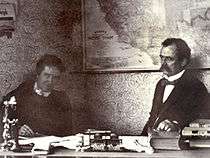
Until the early 1880s the Republican Party held the state through the power and influence of railroad men. The Democratic Party responded by taking an anti-corporate, anti freedom of attainment position. In 1894, Democrat James Budd was elected to the governorship, and the Democratic Party attempted to make good on their promises to reform the booming railroad industry. The party began working closely with the state's railroad commission to create fair rates for passengers and to eliminate monopolies the railroad companies held over the state. The main effort focused on making railroads public avenues of transportation similar to streets and roads. This measure passed and was a great victory for the Democrats, but the honeymoon would not last.[4] Budd was to be the last Democratic governor for thirty years. The struggle between the anti-monopolists and the railroad companies was, however, a key and defining issue for the Democratic Party for some time.
Despite their relative lack of power during this period, the Democrats in California were still active in pursuing reform. The party supported fairer railroad policies and crusaded for tariff reform.[4] The party also supported the large scale railroad strikes that sprung up statewide. The corruption of the time in both the railroad companies and the government led to a change in political dynamic. The people of the state moved away from both of the main parties and the Progressive Movement began.
While the Progressives were successful in creating positive reform and chasing out corruption, the movement drained away many of the Democratic Party's members. As their movement ended, the Republicans won the governorship, but the Democratic Party had a distinct voter advantage.
In 1932, Franklin D. Roosevelt was elected president and the Power balance between the Republicans and the Democrats in California equalized. However, as Roosevelt's New Deal policies began to raise the nation out of the depression, Democratic strength mounted. Culbert Olson was elected to the governorship, but his term was rocky and both parties organized against him. Shortly thereafter, Earl Warren and the Republicans seized power again.[5]
The California Democratic Party needed a new strategy to regain power in the state. A strategy of reorganization and popular mobilization emerged and resulted in the creation of the California Democratic Council. The CDC as it became known was a way for members of the party from all levels of government to come together and as such the party became more unified. A new network of politically minded civilians and elected officials emerged and the party was stronger for it.[6] Despite the fact that the council struggled in the cold war era, due to Republican strength and issues such as the Vietnam War, it still exists today.[7]
1990s
By 1992, California was hurting more than most states from a national recession which had started in 1990, causing incumbent Republican President George H.W. Bush's approval rating to tank within the state, giving an opening for the Democratic party to break through and eventually become the largest party. Starting with the double digit victory of Bill Clinton, this became the first time a Democrat had carried the state of California since 1964. Afterwards, a consolidation of the Latino and Asian vote would strengthen the Democratic party's hold in California, when these groups had previously been considered core Republican supporters within the state.
The California Democratic Party began re-organizing in 1991, and in 1992 the party won the greatest victories in the history of California. President Clinton won California's 54 electoral votes and two women, Dianne Feinstein and Barbara Boxer, were elected as U.S. senators.
Even though redistricting (reapportionment) was executed by a Republican State Supreme Court, California Democrats in November 1992 had increased their margin at all levels—Congressional, State Assembly and in the State Senate.
In 1994, California Democrats suffered a setback by losing the governor's race for the fourth time in a row, and the Democrats became a minority in the State Assembly. However, despite $29 million spent by Republican U.S. Senate candidate Michael Huffington, Democratic incumbent U.S. Senator Dianne Feinstein won re-election.
The 1996 elections proved to be a dramatic turnaround from the results of 1994, as President Bill Clinton won California's 54 electoral votes for a second consecutive time. Three Republican Congressman were also defeated, including Bob Dornan in the conservative stronghold of Orange County. In addition, California Democrats also regained the majority in the State Assembly while adding to their majority in the State Senate.

1998 was a banner year for California Democrats. An overwhelming majority of Californians elected Gray Davis, the first Democratic Governor in 16 years and re-elected U.S. Senator Barbara Boxer. Six of eight candidates for statewide constitutional offices won including Lieutenant Governor Cruz Bustamante, Attorney General Bill Lockyer, Treasurer Phil Angelides, Controller Kathleen Connell and State Superintendent of Public Instruction Delaine Eastin. In addition, California Democrats increased their majority in the State Assembly from 43 to 48 and also in the State Senate from 23 to 25.
21st century
Holding off a national Republican trend in 2002, California Democrats won all eight statewide offices for the first time since 1882. Governor Gray Davis, Lieutenant Governor Cruz Bustamante, Attorney General Bill Lockyer and State Treasurer Phil Angelides were all re-elected while Steve Westly was elected State Controller, Kevin Shelley was elected Secretary of State, John Garamendi was elected Insurance Commissioner and Jack O'Connell was elected State Superintendent of Public Instruction.
This feat (winning all statewide offices) was repeated in 2010, when, despite massive Republican gains nationwide, the California Democratic Party swept all the statewide offices being contested, maintained its 34-19 edge in the 53-member U.S. House delegation and won one additional seat (thus increasing their majority) in the State Assembly while maintaining their current majority in the State Senate.
In the 2012 election, California Democrats experienced tremendous success once again: not only did President Barack Obama win California's 55 electoral votes again with over 60% of the vote and Senator Dianne Feinstein reelected with over 62% of the vote, but California Democrats - despite running in federal and legislative districts that were redrawn by an independent redistricting commission for the first time, per the passage of Propositions 11 and 20, and the implementation of a new blanket primary - also won a net gain of four House seats by defeating three GOP incumbents and winning an open GOP seat and won a supermajority in both houses of the state legislature, a feat which the party last accomplished in 1882.[8] Geographically, the 2012 elections also witnessed the California Democratic Party make inroads in traditionally Republican areas: San Diego, the second largest city in California and a longtime GOP stronghold, elected a Democratic mayor for the first time since 1988.[9] California Democrats also notched up victories in other traditionally Republican areas such as the Inland Empire, Ventura County, the Central Valley, and Orange County.[10]
Governance
The California Democratic Party is a "political party that has detailed statutory provisions applicable to its operation", which are in division 7, part 2 of the California Elections Code.[11][12][13] The Democratic State Central Committee, which is the governing body of the California Democratic Party, functions pursuant to its standing rules and bylaws.[14][15] The Democratic State Central Committee is composed of approximately 2,900 members that are appointed by Democratic elected officials and nominees, elected by county central committees, and elected in Assembly district election meetings, in roughly equal proportion.[16] The Executive Board is composed of approximately 320 members and holds all powers and duties of the California Democratic Party while the state central committee or its conventions are not in session.[16][17]
There are semi-autonomous county central committees for each of California's 54 counties. Each county central committee elects 4 members, plus a member for each 10,000 registered Democrats in that county, to the state central committee.[16][18] The state central committee bylaws specify that county central committees may provide for the election of their allocation of membership on an at-large basis, or by county supervisor districts or Assembly districts, or by any combination thereof.[19]
"Assembly district election meetings" are held biennially in January in every odd-numbered year (immediately after elections for the Governor and President) within each of California's 80 Assembly districts.[16][20] Participation is open to all registered Democrats within the Assembly district.[21] Each meeting elects 14 members to the state central committee, divided as equally as possible between men and women.[22]
County central committees
At every direct primary election, a county central committee is elected in each county.[23] The California Elections Code specifies how county central committee members are elected.[24] Candidates for county central committees are nominated pursuant to division 8, part 1, chapter 1 of the Elections Code,[25] which defines requirements such as the number of Democratic registered voters required (20-40) to sign a nomination.[26][27] A county central committee may also select its members at any time by holding a caucus or convention or by using any other method of selection approved by the committee.[28] If the number of candidates nominated for election does not exceed the number of candidates to be elected, the candidates are not listed on the ballots, but are instead declared elected by the Board of Supervisors.[29]
| County party | Elected members |
|---|---|
| Los Angeles County Democratic Party | There are 7 county central committee members elected at-large by Democratic voters in each California State Assembly district contained wholly or partially within Los Angeles County.[30][31] |
| San Diego County Democratic Party | There are 6 county central committee members elected by Democratic voters in each California State Assembly district contained within San Diego County.[32][33] |
| Orange County Democratic Party | There are 6 county central committee members elected by Democratic voters in each California State Assembly district contained within Orange County at the primary election in each even numbered year.[32][34][35] |
| Santa Clara County Democratic Party | There are 6 county central committee members elected by Democratic voters in each California State Assembly district contained within Santa Clara County.[32][36][37] |
| Alameda County Democratic Party | There are 6 county central committee members elected by Democratic voters in each California State Assembly district contained within Alameda County.[32][38] |
| Sacramento County Democratic Party | There are 6 county central committee members elected by Democratic voters in each supervisor district in Sacramento County.[39] |
| San Francisco Democratic Party | The 24-member county central committee is elected from the two Assembly districts in San Francisco, with a 14/10 member split between the two Assembly districts based on number of registered Democrats.[40][41] |
| San Mateo County Democratic Party | There are 22 elected members of the San Mateo County Democratic Central Committee. They are elected by democratic voters in each County Supervisor District every four years in the Presidential election cycle.[42] |
List of chairs
- George T. Marye (1888–1893)
- William Hays Alford 1896
- Seth Mann (1898-1900)
- John E. Raker (1908–1910)
- Claude F. Purkitt (1922–1928)
- Harry H. McPike (1929–1930)
- Zachary T. Malaby 1931
- Clifford C. Anglim 1937
- Paul Peek 1939
- Culbert L. Olson 1944–1946
- William M. Malone 1945
- Oliver Carter 1949
- Glenn M. Anderson 1950–1952
- Elizabeth C. Snyder (1954–1956)[43]
- Roger Kent (1958)
- Charles Manatt (1969–1973)[44][45][46]
- John Burton (1973–1974)[46]
- Bert Coffey (1977–1979).[47]
- Richard J. O'Neill (1979–81)[48]
- Nancy Pelosi (1981–1983)
- Peter D. Kelly III (1983–1985)[49]
- Betty Smith (1985–1987)[49]
- Peter D. Kelly III (1987–1989)[50]
- Jerry Brown (1989–1991)[51]
- Phil Angelides (1991–1993)[51]
- Bill Press (1993–1996)[52]
- Art Torres (1996–2009)[53]
- John Burton (2009–2017)
- Eric C. Bauman (2017–2018)
- Alex Gallardo-Rooker (acting, 2018–2019)
- Rusty Hicks (2019–present)
Organization
The Democratic State Central Committee of the California Democratic Party of California is organized into nine standing committees: Platform, Resolutions, Rules, Legislation, Affirmative Action, Credentials, Finance, Organizational Development, and Voter Services.[54]
Platform
The California Democratic Party of California adopted its current platform on 25 February 2018.[55] This platform covers a wide range of topics and issues under the following headings:
- Preamble
- Business and Economy
- Children, Young Adults, and their Families
- Civil Justice
- Communications and the Internet
- Criminal Justice
- Culture and the Arts
- Death With Dignity
- Disabilities
- Education
- Energy and Environment
- Equality of Opportunity
- Health Care
- Immigration
- Labor, Economic Justice and Poverty Elimination
- National Security
- Political Reform
- Rural
- Seniors
- Sustainable Communities
- Veterans and Military Families
- Women
- World Peace and International Relations
In regards to businesses and economics, the California Democratic party takes a stance that protects consumers, small businesses, unions, and individuals whose homes have been foreclosed upon.
The platform addresses the issues of family in several sections. The platform promises to protect seniors, children and all types of families with fair economic and social policies. These policies range from continuing Medicare for the elderly and keeping playgrounds safe for children. The platform also highlights the right of a woman to make choices for her own body and claims that healthcare is a natural right of all people. The California democrats further promise to protect the dignity of disabled citizens. The platform is dedicated to advocating for the rights of women through equal pay and affirmative action.
The party prioritizes the creation of a sustainable and earth-friendly state. Focus is placed on the development of alternative forms of energy and how energy is consumed. In addition, the platform stresses that green jobs are a solution to economic and environmental concerns.
Finally, the platform takes stances on open internet use, immigration, and education. The Democrats of California support the right of the people to express their thoughts and ideas through any media, and their right to assemble. The party believes that immigration laws should be fair and that immigrants should not be discriminated against. The party wishes to bring education to the forefront, aiming to turn California into a leading state for academic achievement.
Resolutions
The California Democratic Party passes multiple resolutions every year as a way of expressing their opinion to lawmakers statewide. While the party's resolutions have no legal force themselves, they are official documents that elected representatives should take into account when making decisions. A few recent resolutions are summarised below:
- 2012 Buy American
- This resolution, written 18 November 2012, encourages all arms of government to favor American suppliers of goods and services.
- 2012 Department of Defense Clean Energy Initiatives
- This resolution was written on 18 November 2012 and supports the Department of Defense's initiative to commit to clean energy and alternative fuels through the Navy's "Great Green Fleet" initiative, the Army's "Net Zero" initiative, and the Air Force's commitment to lower carbon emissions.
- 2012 Filibuster Reform
- This resolution condemns the Republican Party's use of the filibuster to disrupt the work of the U.S. Senate and advocates that reform must be the first priority of the Senate Majority.
The above are only three of a long list of Resolutions passed by the California Democratic Party. For a full list and details of all Resolutions, refer to the official website.[56]
Current elected officials
The following is a list of Democratic statewide, federal, and legislative officeholders as of June 12, 2019:
Statewide constitutional officers
After the last election, Democrats maintained control over all eight elected statewide constitutional offices:
- Governor: Gavin Newsom
- Lieutenant Governor: Eleni Kounalakis
- Secretary of State: Alex Padilla
- State Controller: Betty Yee
- State Treasurer: Fiona Ma
- Attorney General: Xavier Becerra
- Insurance Commissioner: Ricardo Lara
- Superintendent of Public Instruction: Tony Thurmond (this office is officially non-partisan and Thurmond was elected as a non-partisan)
Federal officeholders for the 116th United States Congress
U.S. Senate
Both of California's seats in the U.S. Senate have been under Democratic control since 1992:
- Class I: Dianne Feinstein (Senior Senator)
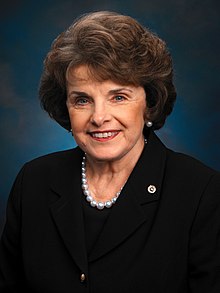 Senior Senator Feinstein
Senior Senator Feinstein - Class III: Kamala Harris (Junior Senator)
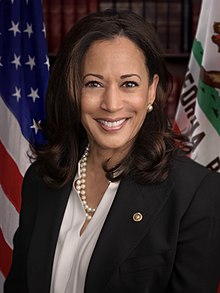 Junior Senator Harris
Junior Senator Harris
U.S. House of Representatives
Of the 53 seats California is apportioned in the U.S. House following the 2010 census, 45 are held by Democrats:
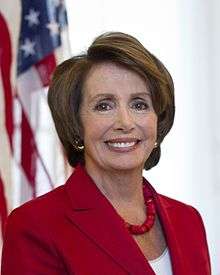
- CA-02: Jared Huffman
- CA-03: John Garamendi
- CA-05: Mike Thompson
- CA-06: Doris Matsui
- CA-07: Ami Bera
- CA-09: Jerry McNerney
- CA-10: Josh Harder
- CA-11: Mark DeSaulnier
- CA-12: Nancy Pelosi (Speaker of the House)[57]
- CA-13: Barbara Lee
- CA-14: Jackie Speier
- CA-15: Eric Swalwell
- CA-16: Jim Costa
- CA-17: Ro Khanna
- CA-18: Anna Eshoo
- CA-19: Zoe Lofgren
- CA-20: Jimmy Panetta
- CA-21: TJ Cox
- CA-24: Salud Carbajal
- CA-25: Vacant (since October 27, 2019)
- CA-26: Julia Brownley
- CA-27: Judy Chu
- CA-28: Adam Schiff
- CA-29: Tony Cardenas
- CA-30: Brad Sherman
- CA-31: Pete Aguilar
- CA-32: Grace Napolitano
- CA-33: Ted Lieu
- CA-34: Jimmy Gomez
- CA-35: Norma Torres
- CA-36: Raul Ruiz
- CA-37: Karen Bass
- CA-38: Linda Sánchez
- CA-39: Gil Cisneros
- CA-40: Lucille Roybal-Allard
- CA-41: Mark Takano
- CA-43: Maxine Waters
- CA-44: Nanette Barragán
- CA-45: Katie Porter
- CA-46: Lou Correa
- CA-47: Alan Lowenthal
- CA-48: Harley Rouda
- CA-49: Mike Levin
- CA-51: Juan Vargas
- CA-52: Scott Peters
- CA-53: Susan Davis
Board of Equalization, State Senate, & State Assembly
Board of Equalization
Democrats hold four of the five seats on the State Board of Equalization: three of the four district-based seats, and the at-large ex officio seat reserved for the incumbent State Controller, who in this instance is Democrat Betty Yee.
- 2nd District: Malia Cohen
- 3rd District: Tony Vasquez
- 4th District: Mike Schaefer
- State Controller: Betty Yee
State Senate
Democrats hold a 29-11 supermajority in the 40-member California State Senate. The Democrats have been the majority party in the Senate continuously since 1956.
- SD 2: Mike McGuire (Majority Caucus Vice Chair)
- SD 3: Bill Dodd
- SD 5: Cathleen Galgiani
- SD 6: Richard Pan
- SD 7: Steve Glazer
- SD 9: Nancy Skinner
- SD 10: Bob Wieckowski
- SD 11: Scott Wiener
- SD 12: Anna Caballero
- SD 13: Jerry Hill
- SD 14: Melissa Hurtado
- SD 15: Jim Beall
- SD 17: Bill Monning (Majority Leader)
- SD 18: Robert Hertzberg
- SD 19: Hannah-Beth Jackson
- SD 20: Connie Leyva (Majority Caucus Chair)
- SD 22: Susan Rubio
- SD 24: Maria Elena Durazo
- SD 25: Anthony Portantino
- SD 26: Ben Allen
- SD 27: Henry Stern
- SD 30: Holly Mitchell
- SD 31: Richard Roth
- SD 32: Bob Archuleta
- SD 33: Lena Gonzalez
- SD 34: Tom Umberg
- SD 35: Steven Bradford
- SD 39: Toni Atkins (Senate President pro Tempore)
- SD 40: Ben Hueso
State Assembly
Democrats hold a 61–18 supermajority in the 80-seat California State Assembly. The Democrats have been the majority party in the Assembly continuously since 1996.
- AD 2: Jim Wood
- AD 4: Cecilia Aguiar-Curry
- AD 7: Kevin McCarty
- AD 8: Ken Cooley
- AD 9: Jim Cooper (Assistant Majority Leader)
- AD 10: Marc Levine
- AD 11: Jim Frazier
- AD 13: Susan Eggman
- AD 14: Tim Grayson
- AD 15: Buffy Wicks
- AD 16: Rebecca Bauer-Kahan
- AD 17: David Chiu (Assistant Speaker pro tempore)
- AD 18: Rob Bonta
- AD 19: Phil Ting
- AD 20: Bill Quirk
- AD 21: Adam Gray
- AD 22: Kevin Mullin (Speaker pro tempore)
- AD 24: Marc Berman
- AD 25: Kansen Chu
- AD 27: Ash Kalra
- AD 28: Evan Low (Assistant Majority Whip)
- AD 29: Mark Stone
- AD 30: Robert Rivas
- AD 31: Joaquin Arambula
- AD 32: Rudy Salas
- AD 37: Monique Limón
- AD 38: Christy Smith
- AD 39: Luz Rivas
- AD 40: James Ramos
- AD 41: Chris Holden
- AD 43: Laura Friedman
- AD 44: Jacqui Irwin
- AD 45: Jesse Gabriel
- AD 46: Adrin Nazarian
- AD 47: Eloise Reyes
- AD 48: Blanca Rubio
- AD 49: Ed Chau
- AD 50: Richard Bloom
- AD 51: Wendy Carrillo
- AD 52: Freddie Rodriguez
- AD 53: Miguel Santiago (Majority Whip)
- AD 54: Sydney Kamlager
- AD 56: Eduardo Garcia
- AD 57: Ian Calderon (Majority Leader)
- AD 58: Cristina Garcia
- AD 59: Reggie Jones-Sawyer
- AD 60: Sabrina Cervantes
- AD 61: Jose Medina
- AD 62: Autumn Burke (Assistant Speaker pro tempore)
- AD 63: Anthony Rendon (Speaker of the Assembly)
- AD 64: Mike Gipson (Majority Caucus Chair)
- AD 65: Sharon Quirk-Silva
- AD 66: Al Muratsuchi
- AD 69: Tom Daly
- AD 70: Patrick O'Donnell
- AD 74: Cottie Petrie-Norris
- AD 76: Tasha Boerner Horvath
- AD 77: Brian Maienschein
- AD 78: Todd Gloria
- AD 79: Shirley Weber
- AD 80: Lorena Gonzalez
Mayoral offices
Some of the state's major cities have Democratic mayors. As of 2019, Democrats control the mayor's offices in six of California's ten largest cities:
- Los Angeles (1): Eric Garcetti
- San Jose (3): Sam Liccardo
- San Francisco (4): London Breed
- Sacramento (6): Darrell Steinberg
- Long Beach (7): Robert Garcia
- Oakland (8): Libby Schaaf
See also
References
- "California Secretary of State Report of Registration as of October 22, 2018" (PDF).
- California Research Bureau (June 1853). "Studies in the News". California State Library. Archived from the original on 2007-06-29. Retrieved 2007-05-09.
- "Election History for the state of California". JoinCalifornia. 7 September 1859. Retrieved 2007-05-21.
- Williams Hal, "The Democratic Party and California Politics 1880 - 1896" (Stanford University Press, California, 1973)
- http://www.kintera.org/site/pp.asp?c=fvLRK7O3E&b=33602
- Bell Jonathan, "Social Democracy and the Rise of the Democratic Party in California 1950 - 1964" (The Historical Journal)
- "California Democratic Council - California Democratic Council". www.cdc-ca.org. Retrieved 25 March 2018.
- Onishi, Norimitsu (9 November 2012). "Democrats Likely to Win Supermajority in California Legislature". Retrieved 25 March 2018 – via NYTimes.com.
- "Home". sandiego6.com. Archived from the original on 2 February 2013. Retrieved 25 March 2018.
- "Archived copy". Archived from the original on 2012-11-27. Retrieved 2012-11-28.CS1 maint: archived copy as title (link)
- California Elections Code § 7050
- West's California Jurisprudence 3d. 28. Bancroft-Whitney Company. 1972. p. 615. OCLC 605100.
The organization, operation, and functions of the Democratic Party of California are specifically regulated by the Elections Code.
- Eu v. San Francisco County Democratic Central Committee (1989), 489 U.S. 214 Archived 2014-03-12 at the Wayback Machine. "The State of California heavily regulates its political parties. … The California Elections Code (Code) provides that the 'official governing bodies' for such a party are its 'state convention,' 'state central committee,' and 'county central committees,' …"
- California Elections Code § 7150
- By-Laws & Rules of the California Democratic Party Archived 2013-05-13 at the Wayback Machine. July 2012.
- "About Us / California Democratic Party". California Democratic Party. Archived from the original on 13 May 2013. Retrieved 30 May 2013.
- By-Laws Article VII, § 1(a)
- By-Laws Article II, § 4(a)
- By-Laws Article II, § 4(f)
- By-Laws Article VI, § 1(a)(1)
- By-Laws Article VI, § 1(a)(2)
- By-Laws Article II, § 1(a)(4), § 5(a), § 5(b)
- California Elections Code § 7225 et seq.
- California Elections Code §§ 7200–7216
- California Elections Code § 7227
- California Elections Code § 8062
- California Elections Code § 8068
- California Elections Code § 7230
- California Elections Code § 7228
- California Elections Code § 7203
- Constitution and By-Laws of the Los Angeles County Democratic Central Committee, 10 April 2012, p. 2
- California Elections Code § 7202
- San Diego County Democratic Party Bylaws Archived 2014-03-09 at the Wayback Machine, 20 November 2012, Article 2, § 1(B)(2)
- "Central Committee - Democratic Party of Orange County". Retrieved 8 March 2014.
- Orange County Democratic Central Committee Bylaws, August 2009, Article II, § 1(A)
- "Central Committee - Santa Clara County Democratic Party". Retrieved 8 March 2014.
- Santa Clara County Democratic Central Committee By-Laws, § II.A.1.
- Bylaws of the Alameda County Democratic Central Committee, August 7, 2013, Article II, § 2
- Sacramento County Democratic Central Committee Constitution Archived 2014-03-09 at the Wayback Machine, March 2013, Article II, § 1(B)(1)
- California Elections Code § 7204
- San Francisco Democratic County Central Committee Bylaws, 23 January 2013, Article 2, § 1(a)(1)
- "About Us". smcdems.org. Retrieved 25 March 2018.
- "Elizabeth Snyder; Led State Democratic Party". Los Angeles Times. 1998-08-28. Retrieved 2019-02-24.
- "Firm Mourns the Passing of Founder Charles T. Manatt". Manatt, Phelps & Phillips, LLP. Retrieved 2019-02-24.
- "Charles T. Manatt (1936-2011) Papers, 1971-2011, undated". Iowa State University Special Collections. Retrieved 2019-02-24.
- "McGovern Backer to Head California Democrats". New York Times. 1973-01-29. Retrieved 2019-02-24.
- "Boos Turn to Cheers as Gov. Brown Addresses California Democrats". The New York Times. 1979-01-21. Retrieved 2019-04-19.
- "Richard J. O'Neill dies at 85; prominent O.C. landowner and Democratic Party activist". Los Angeles Times. 2009-04-05. Retrieved 2019-04-19.
- "The State". Los Angeles Times. 1987-02-02. ISSN 0458-3035. Retrieved 2019-01-12.
- Times, Special to the New York (1989-02-13). "Jerry Brown Wins State Party Post". The New York Times. ISSN 0362-4331. Retrieved 2019-01-12.
- STALL, BILL (1993-09-04). "Angelides Outlines Plans in Treasurer Bid". Los Angeles Times. ISSN 0458-3035. Retrieved 2019-01-12.
- Press, Bill (2018-03-20). From the Left: A Life in the Crossfire. St. Martin's Press. ISBN 9781250147165.
- Orlov, Rick (2008-04-01). "Lining up to follow Art Torres". The Sausage Factory. Retrieved 2019-01-12.
- "Standing Committees". California Democratic Party.
- "Platform Committee". California Democratic Party. Retrieved 21 April 2019.
- California Democratic Party Resolutions Archived 2013-03-16 at the Wayback Machine
- Nilsen, Ella (3 January 2019). "It's official: Nancy Pelosi is elected speaker of the House". Vox.
